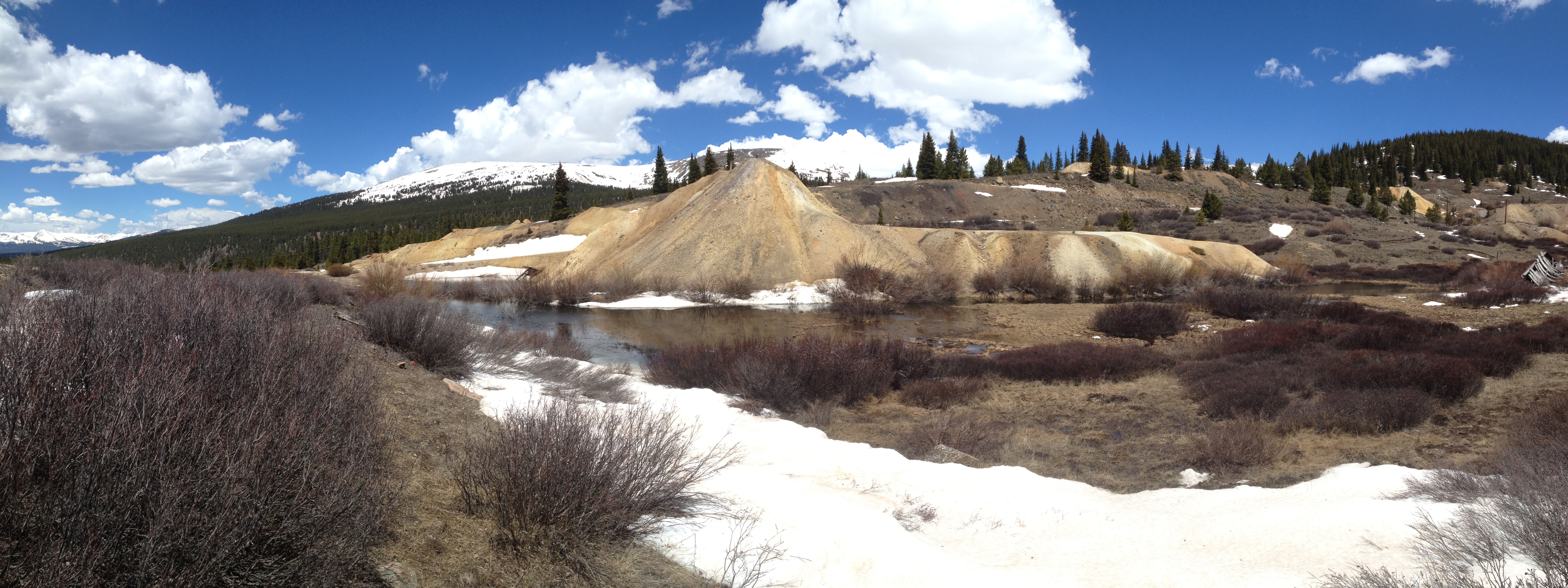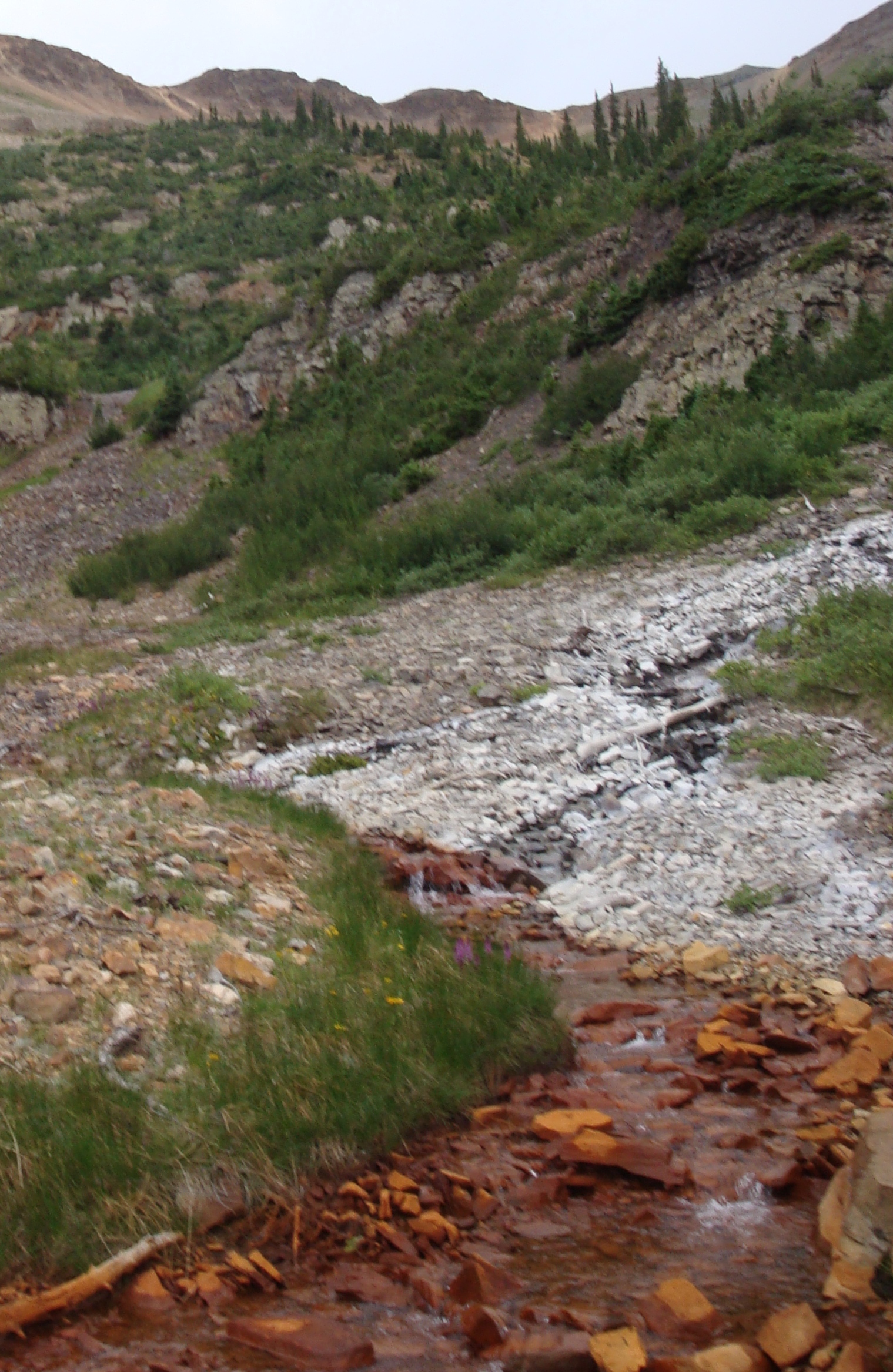By Skip Feeney, Water Quality Scientist, Colorado Department of Public Health and Environment’s Water Quality Control Division
Recently, I stayed at the Polar Star Inn, a hut in the 10th Mountain Division Hut system. Within an hour of arriving several children reported back that they had found a large hole in the ground that went really deep! It turned out to be a mine. Actually this hut got its name from an abandoned silver mine named the Polar Star Mine. It is not hard to stumble upon abandoned mines in Colorado. In fact there are an estimated 23,000 abandoned or inactive mines in Colorado alone.
Colorado and mining have a long history together. According to the History Colorado website, “The Pike’s Peak Gold Rush brought unprecedented numbers of people into the region…culminating in the admittance of Colorado to the Union in 1876.” Most Colorado hard rock mining activity predates the passing of current environmental regulations in the 1970s and 1980s. Before this time many mining companies did not restore the mined area, leaving physical hazards and human and environmental impacts.

Credit: Ashley Bembenek, Coal Creek Watershed Coalition
One key environmental impact to water quality is acid mine drainage. This occurs when oxygen from the air and water react with sulfide minerals, increasing the acidity of the water. The acidic solution dissolves metals and flows into streams, lakes and groundwater. Acid mine drainage is exacerbated by mining practices when excavated materials leave voids in the moutain, increasing surface area for the acid mine drainage reaction to occur.
High levels of metals harm fish and aquatic ecosystems. These contaminants also impact drinking water and agricultural water sources. This problem is significant with 1,800 miles of Colorado streams, not meeting water quality standards due to acid mine drainage related pollutants.
Unfortunately solving the water quality issues related to abandoned mines has its share of challenges. Abandoned mines are expensive to address—often in the millions of dollars with ongoing treatment costs. Many historic mining companies are no longer in business and therefore are not able to pay for restoration costs, and existing government funding sources are not sufficient to clean up all of the abandoned mines. Plus, liability concerns over treatment of mine drainage to Clean Water Act standards prevent many agencies and environmental groups from volunteering to clean up abandoned mines.
After the Environmental Protection Agency inadvertently caused a discharge at the Gold King mine, one year ago, a spotlight was shone on the statewide problem of abandoned mines. The Colorado Water Quality Control Division launched the Mine Impacted Streams Task Force to determine the extent and magnitude of abandoned mine impacts to water quality. The task force is made up of staff members from the Hazardous Materials and Waste Management Division, the Water Quality Control Division and the Division of Reclamation Mining and Safety. The task force supports two initiatives: 1) An abandoned mine inventory and 2) a water quality study of draining, abandoned mines.

Credit: Ashley Bembenek, Coal Creek Watershed Coalition
The abandoned mine inventory project combines and presents the existing unique and separate federal and state abandoned mine data sets. The inventory aims to better understand the number of abandoned mines and their locations and make this information available to water users, restoration professionals and the public. While prioritization of mine restoration activities is defined within each agency, the inventory will provide tools to help agencies work together to restore abandoned mines. The inventory steering committee includes the above mentioned state agencies, Colorado Geologic Survey, U.S. Forest Service, Bureau of Land Management, Environmental Protection Agency, National Parks Service, Department of Energy, U.S. Geologic Survey and other organizations.
The Draining Mines Water Quality Study is a Governor directed initiative that will survey and measure the water quality of roughly 150 draining mines within the state. This study has begun and a final report will be published in 2017. Of the mines being studied, all of them that are presumed to negatively impact water quality are abandoned and lack recent investigation. The study will provide a water quality snapshot from which risk assessment and restoration prioritization can begin. The Division of Reclamation Mining and Safety and the Water Quality Control Division are partnering to execute this study.
As mentioned above there are many challenges to addressing this problem. However, the abandoned mine inventory and draining mines water quality study will provide information for all agencies, watershed groups and mining companies to make more informed prioritization and restoration decisions. This will help to maximize the money invested in reducing pollution from abandoned mines.
 Skip Feeney holds a Bachelor of Science degree in Environmental Health. He has worked in the water quality industry for 15 years. This includes private sector work in regulatory, program and data management consulting for municipal agencies and public sector work with the Colorado Water Quality Control Division as a water quality assessor. In his role with the Division he championed the development and implementation of a Measurable Results Program to evaluate the water quality impacts derived from pollution control projects funded through the Division. Projects within this program include wastewater treatment plant upgrades and abandoned mine restorations. He is currently taking a leading role with the Mine Impacted Waters Task Force. The task force supports two initiatives: 1) An abandoned mine inventory and 2) a water quality study of 150 draining, abandoned mines.
Skip Feeney holds a Bachelor of Science degree in Environmental Health. He has worked in the water quality industry for 15 years. This includes private sector work in regulatory, program and data management consulting for municipal agencies and public sector work with the Colorado Water Quality Control Division as a water quality assessor. In his role with the Division he championed the development and implementation of a Measurable Results Program to evaluate the water quality impacts derived from pollution control projects funded through the Division. Projects within this program include wastewater treatment plant upgrades and abandoned mine restorations. He is currently taking a leading role with the Mine Impacted Waters Task Force. The task force supports two initiatives: 1) An abandoned mine inventory and 2) a water quality study of 150 draining, abandoned mines.

 Print
Print
Reblogged this on Coyote Gulch.
Inadvertent is very disingenuous. The mine was plugged and the EPA caused the spill. There should have been criminal prosecution.